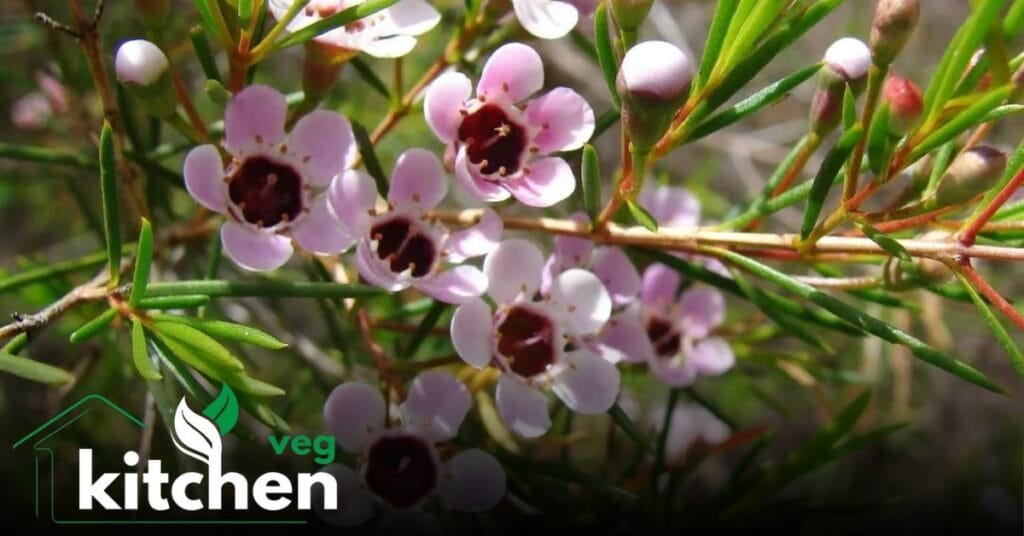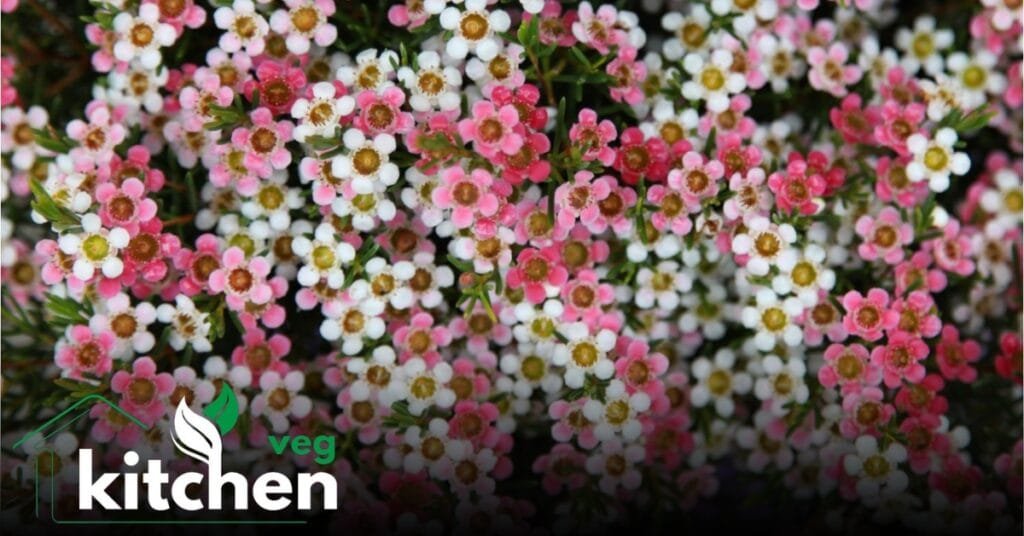Introduction
Waxflower is the scientific name for a genus of plants endemic to Western Australia, Chamelaucium. These plants are becoming increasingly common in floral arrangements and as decorative garden plants because of their delicate, waxy blossoms and scented foliage. They are a favourite of both florists and gardeners due to their extended vase life and range of colours.
Botanical Characteristics
Plant Structure
Waxflower plants are small to medium-sized shrubs that can grow up to 10 feet tall. They have small, 1-2 cm diameter flowers with five petals and a waxy texture, slender, woody stems, and needle-like leaves that release a pleasant fragrance when crushed.
Flower Variations
Among various colours, Waxflower blossoms can be white Wax Flower, pink Wax Flower, purple Wax Flower and red Wax Flower. Usually, they bloom in clusters, which produces a fantastic sight. In addition, the flowers are well-known for remaining long in floral arrangements, both when cut and while still on the plant.
Habitat and Distribution
Native Range
The southern parts of Western Australia are the native habitat of waxflowers. The area’s Mediterranean environment, marked by rainy winters and dry summers, is ideal for them. The natural environment here offers the best circumstances for their development and growth.
Global Cultivation
Waxflowers are native to Africa but have also been cultivated in the United States, Israel, and other countries. These areas have comparable climates that support their growth.

Grow Waxflower in your Garden
Soil Requirements
Waxflowers favour soils that drain well, are typically sandy or gravelly, and have a pH range of slightly acidic to neutral. Root rot is a typical problem in heavier clay soils that can be avoided with proper drainage.
Light and Temperature
Although they may withstand little shade, these plants prefer full sun. They like it between fifty and eighty degrees Temperature. They can tolerate brief frosts, but extended exposure to below-freezing temperatures can be harmful.
Watering Needs
Waxflowers are suitable for gardening because, once established, they can withstand drought. However, frequent watering is required during the establishing stage and in arid conditions. Avoiding overwatering can avoid root infections.
Planting and Propagation
Planting
Waxflowers can be planted from seeds or cuttings. When planting seeds, it’s essential to stratify them for better germination rates. Cuttings should be taken from healthy, non-flowering stems and treated with rooting hormone before planting.
Propagation Methods
The most popular and effective method is cutting-based propagation. Softwood cuttings are readily taken in late spring or early summer roots in a warm, humid atmosphere. It’s best to use a propagation mix that drains well and maintains steady moisture levels without waterlogging.
Care and Maintenance
Pruning
Frequent pruning promotes bushier growth and helps keep the plant in form. After flowering, prune by taking roughly one-third of the plant back. Cutting into old wood can prevent new growth, so avoid doing so.
Fertilization
Overfertilization is usually not necessary for waxflowers. Early in the spring, a light application of a slow-release, balanced fertilizer can encourage robust growth and profuse flowering. Additionally, organic mulch can supply vital nutrients and retain soil moisture.
Pest and Disease Management
Waxflowers are relatively resistant to pests. If they are overwatered, they may become vulnerable to root rot. Essential preventive actions include ensuring soil drains well and using the proper irrigation techniques. Sometimes, issues such as aphids and scale insects can be managed with insecticidal soap or horticultural oil.
Waxflower in Floral Arrangements
Popularity in Floristry
Because of their durability and lovely beauty, White wax flower is a mainstay in the florist industry. Their tiny, delicate blossoms give bouquets and centerpieces fullness and substance. They go nicely with many different kinds of flowers and foliage.
Care for Cut Flowers
Cut waxflower stems under water and recut them before arranging them in a fresh vase with floral preservative to extend their vase life. Their freshness can be extended by changing the water every few days and shielding the arrangement from the sun.
Uses and Benefits
Ornamental Uses
Because of their visual attractiveness and low maintenance needs, waxflowers are popular in gardens and landscapes. They are frequently utilized as hedge plants, borders, and rock gardens. Their protracted blossoming season gives the garden long-lasting color and intrigue.
Ecological Benefits
Waxflowers contribute to the upkeep of regional ecosystems in their natural settings. They provide nectar for pollinators like bees and butterflies. Furthermore, because of their resistance to drought, they can be used in sustainable landscaping techniques.
Popular Varieties
Chamelaucium uncinatum
This species is most commonly cultivated and is frequently referred to as Geraldton wax. It has long-lasting flowers and a variety of flower colours, ranging from deep purple to white. It is also renowned for its vigorous growth.

Chamelaucium ciliatum
A rarer species, it is prized for its minor, compact growth habit and distinctive leaf. The flowers, usually white or light pink, give gardens and arrangements a delicate touch.
Challenges and Solutions
Root Rot
A significant problem with white wax flower cultivation is root rot, frequently caused by overwatering or poorly draining soils. This problem can be lessened by ensuring the soil drains appropriately and using the proper irrigation techniques.
Frost Damage
Light frosts are tolerable for waxflowers, but persistent or severe frosts might harm the plants. Plants can be protected from frost during cold spells by providing frost protection, such as mulching and using frost cloths.
Conclusion
Waxflowers are beautiful, adaptable plants with many uses for florists and gardeners. They provide value and aesthetic appeal to any garden or floral arrangement, and their low maintenance requirements contribute to their appeal. With the proper care and attention, waxflowers can flourish and continue to bring beauty and joy for many years.

